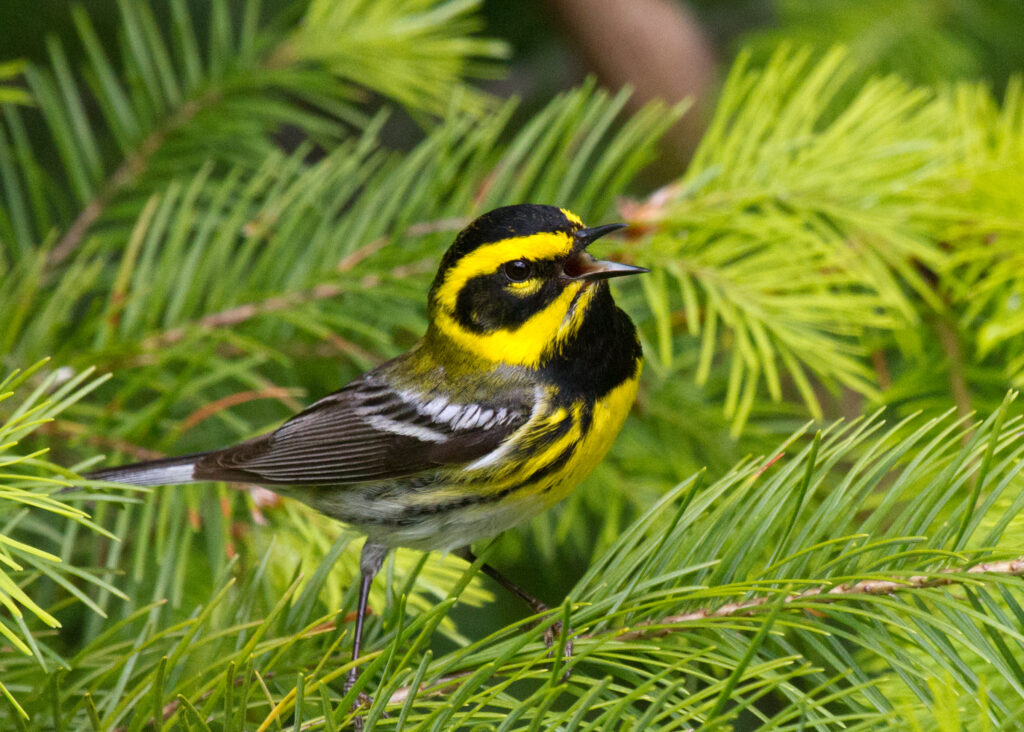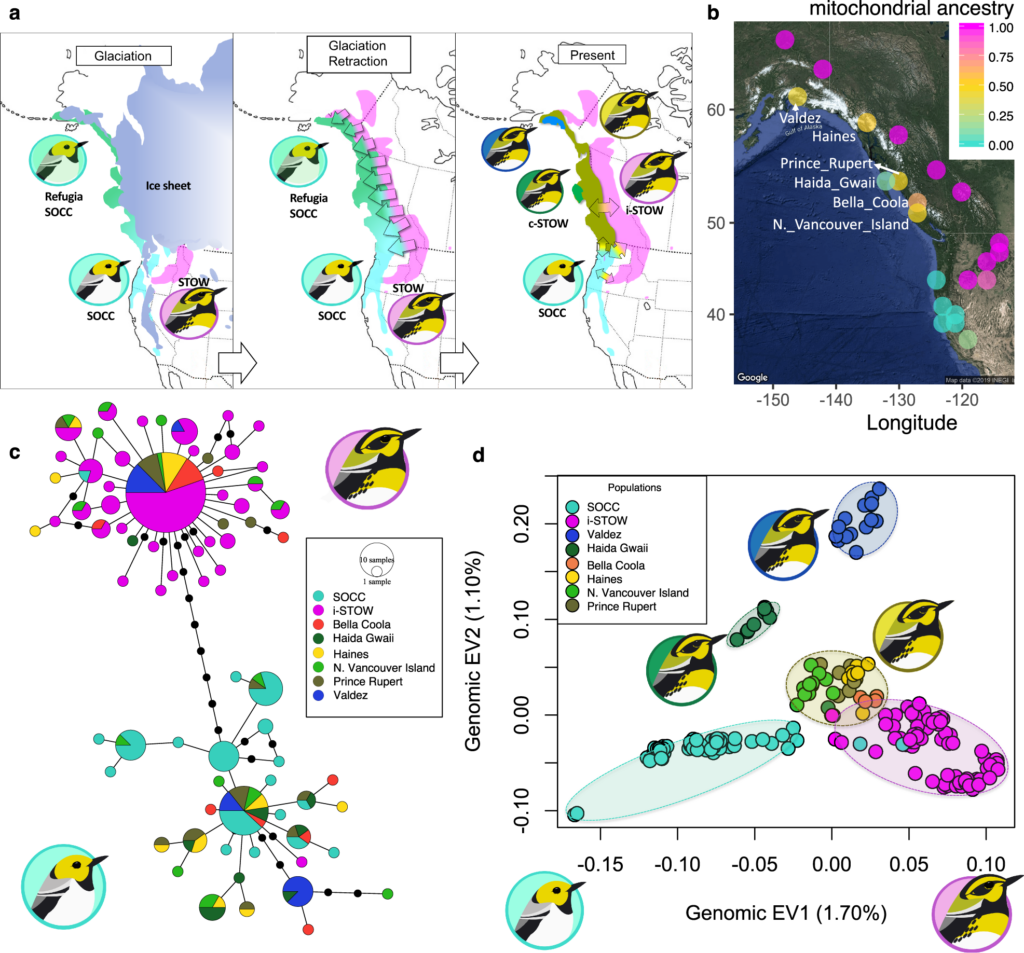Congratulations to lead author Dr. Silu Wang and coauthors on the publication of a paper on the history and genomic makeup of coastal populations of Setophaga townsendi, pictured here (photo by D. Irwin):

Silu and I are grateful for the contributions of coauthors Maddie Ore, Else Mikkelsen, Julie Lee-Yaw, David Toews, and Sievert Rohwer.
The full citation:
Wang, S., M.J. Ore, E.K. Mikkelsen, J. Lee-Yaw, D.P.L. Toews, S. Rohwer, and D. Irwin. 2021. Signatures of mitonuclear coevolution in a warbler species complex. Nature Communications 12: 4279. https://doi.org/10.1038/s41467-021-24586-8
The abstract:
Divergent mitonuclear coadaptation could facilitate speciation. We investigate this possibility in two hybridizing species of warblers, Setophaga occidentalis and S. townsendi, in western North America. Inland S. townsendi harbor distinct mitochondrial DNA haplotypes from those of S. occidentalis. These populations also differ in several nuclear DNA regions. Coastal S. townsendi demonstrate mixed mitonuclear ancestry from S. occidentalis and inland S. townsendi. Of the few highly-differentiated chromosomal regions between inland S. townsendi and S. occidentalis, a 1.2 Mb gene block on chromosome 5 is also differentiated between coastal and inland S. townsendi. Genes in this block are associated with fatty acid oxidation and energy-related signaling transduction, thus linked to mitochondrial functions. Genetic variation within this candidate gene block covaries with mitochondrial DNA and shows signatures of divergent selection. Spatial variation in mitonuclear ancestries is correlated with climatic conditions. Together, these observations suggest divergent mitonuclear coadaptation underpins cryptic differentiation in this species complex.
Below is figure 1 from the paper, showing Silu’s beautiful graphics, and you can see more interesting figures here.

